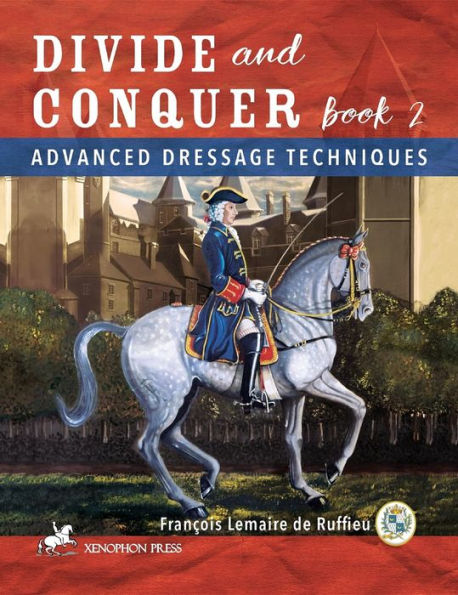Just as small streams make big rivers, Divide and Conquer Book 1 explains a myriad of details on how to address each of the horse's body parts for training purposes. Divide and Conquer Book 2 regroups these details to show how to accomplish all of the upper level movements and provides several techniques designed to educate riders to achieve their short and long term goals. In a clear and simple method, François Lemaire de Ruffieu describes all the longitudinal and lateral movements including flying changes of lead at close intervals, canter pirouette, piaffe and passage, along with patterns and exercises that develop them.
All techniques for the upper level movements employ the horse's natural reflexes to stimuli at their foundations. The techniques provide a sound basis of training for any level and any discipline.
Dressage is an Art, and as such, can be viewed in many different ways. History shows that some extraordinary riding masters were radically different in their theories: Riders physical characteristics and differences in horse breeding have influenced Riding Masters leaving us a rich history of techniques with which to educate our horses properly. Dressage tends to follow fashion. Nevertheless, the goals of dressage have always remained the same: render the horse agreeable, easy to ride, well-balanced, straight and responding instantaneously to the slightest aids. Dressage is a school of obedience as well as a school of thought.
Just as small streams make big rivers, Divide and Conquer Book 1 explains a myriad of details on how to address each of the horse's body parts for training purposes. Divide and Conquer Book 2 regroups these details to show how to accomplish all of the upper level movements and provides several techniques designed to educate riders to achieve their short and long term goals. In a clear and simple method, François Lemaire de Ruffieu describes all the longitudinal and lateral movements including flying changes of lead at close intervals, canter pirouette, piaffe and passage, along with patterns and exercises that develop them.
All techniques for the upper level movements employ the horse's natural reflexes to stimuli at their foundations. The techniques provide a sound basis of training for any level and any discipline.
Dressage is an Art, and as such, can be viewed in many different ways. History shows that some extraordinary riding masters were radically different in their theories: Riders physical characteristics and differences in horse breeding have influenced Riding Masters leaving us a rich history of techniques with which to educate our horses properly. Dressage tends to follow fashion. Nevertheless, the goals of dressage have always remained the same: render the horse agreeable, easy to ride, well-balanced, straight and responding instantaneously to the slightest aids. Dressage is a school of obedience as well as a school of thought.

Divide and Conquer Book 2: Advanced Dressage Techniques
144
Divide and Conquer Book 2: Advanced Dressage Techniques
144eBook (Divide and Conquer Book 2 shows how to accomplish all of the upper level dressage movements and prov)
Related collections and offers

Product Details
| ISBN-13: | 9780933316959 |
|---|---|
| Publisher: | Xenophon Press LLC |
| Publication date: | 02/01/2017 |
| Series: | Divide and Conquer , #2 |
| Sold by: | Barnes & Noble |
| Format: | eBook |
| Pages: | 144 |
| File size: | 13 MB |
| Note: | This product may take a few minutes to download. |
